De Soto was named after the 16th century Spanish explorer and conquistador Hernando de Soto, an appellation chosen because at the time it symbolized to many people the sense of adventure, pioneering and travel. The original circular emblem logo featured Hernando de Soto dressed in his coat of arms and it (or similar variations of this design) was used on hood ornaments and center caps of steering wheels on De Soto vehicles over the years.
When it came time to name the new medium-priced car division of Chrysler in 1928, the name De Soto was chosen, and reportedly by Walter P. Chrysler himself, who was looking through an American history book and thought it was suitable.
1929
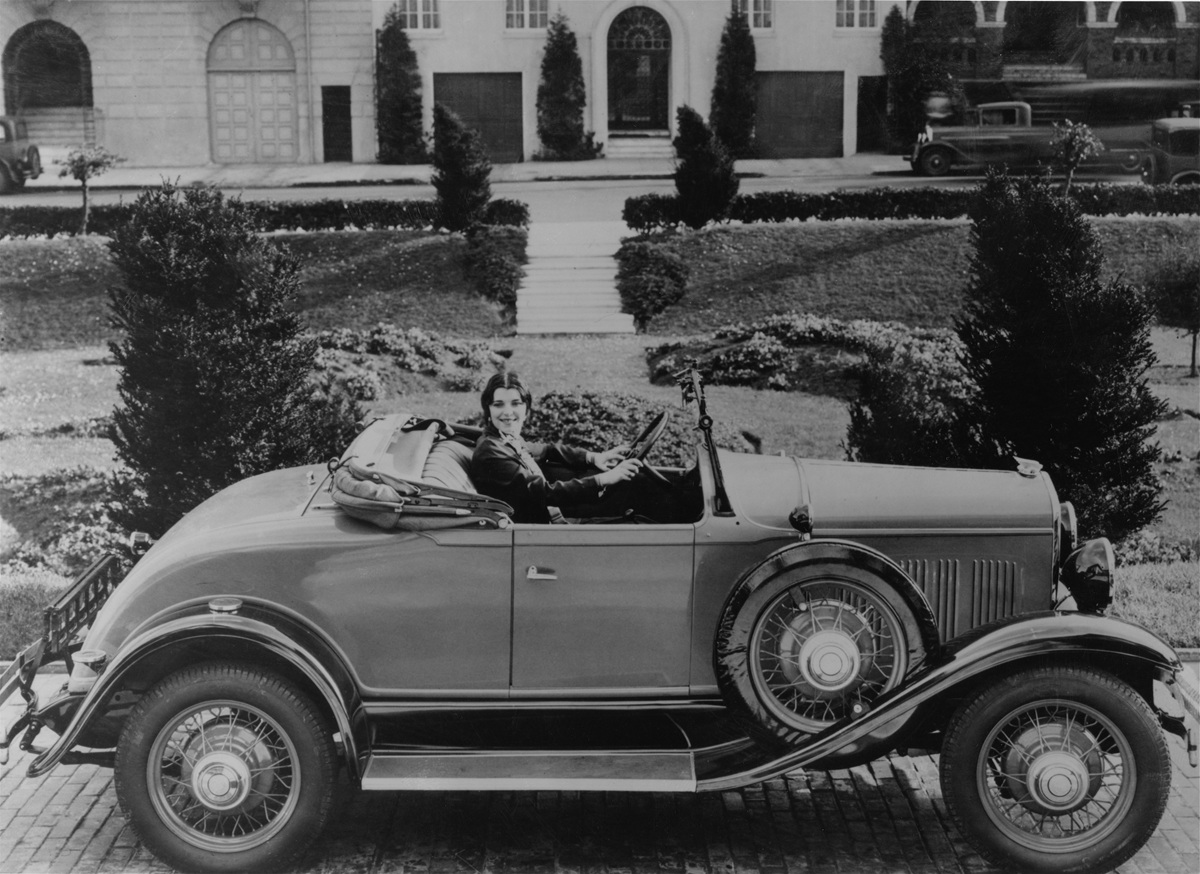
With the launch of the new De Soto, the advertisements that announced the new division proclaimed “De Soto Six – product of Chrysler engineering and manufacturing genius – gives so much more beauty, quality and performance ability for so little cost.” Pictured here in a factory publicity shot is the 1929 De Soto Series K Roadster Espanol with optional luggage rack, cowl lights and steel wire wheels. These roadsters were considered 4-passenger models because of the rumble seat feature that came as standard equipment. Base price: $845.00.
DE SOTO AIRFLOW
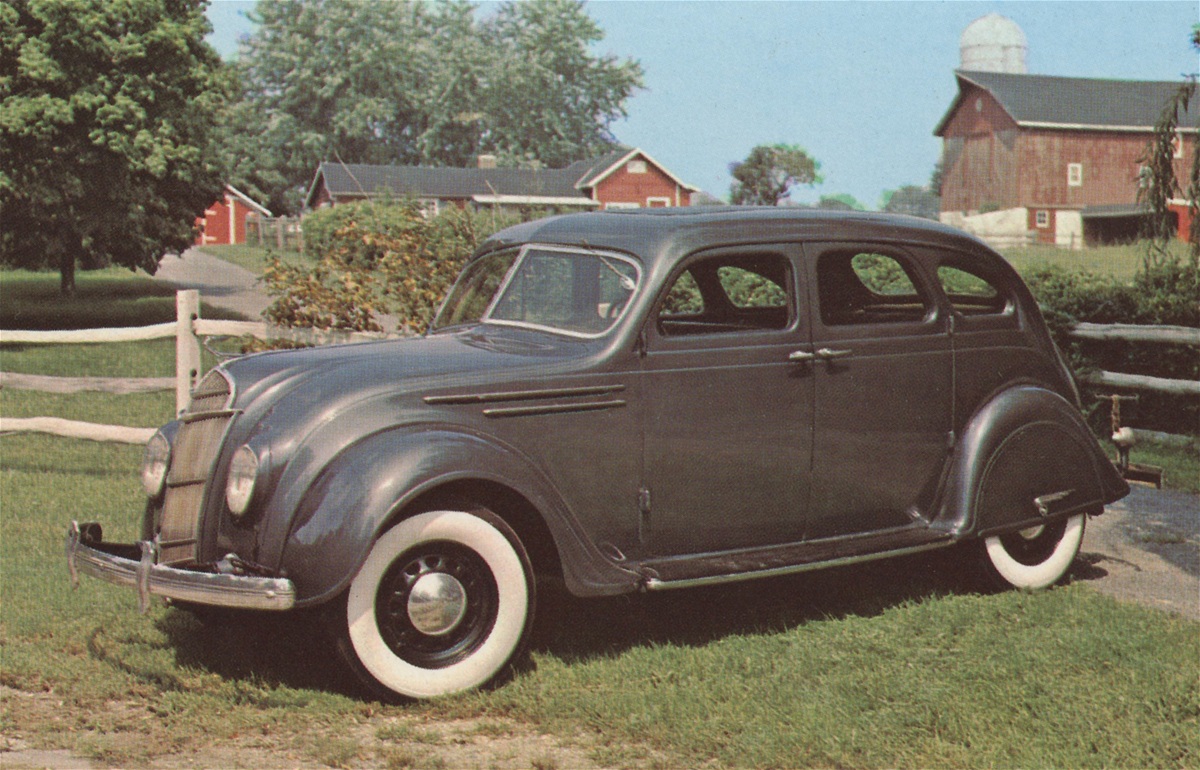
The advanced design of the De Soto Airflow body shape was a poor seller and abandoned after three model year runs, 1934-1936. Pictured here is a 1935 De Soto Series SG Airflow 4-door Sedan, of which 6,262 units were sold. Simply stated, the American car buyer wasn’t ready for advanced aerodynamics in the mid-1930s.
1939
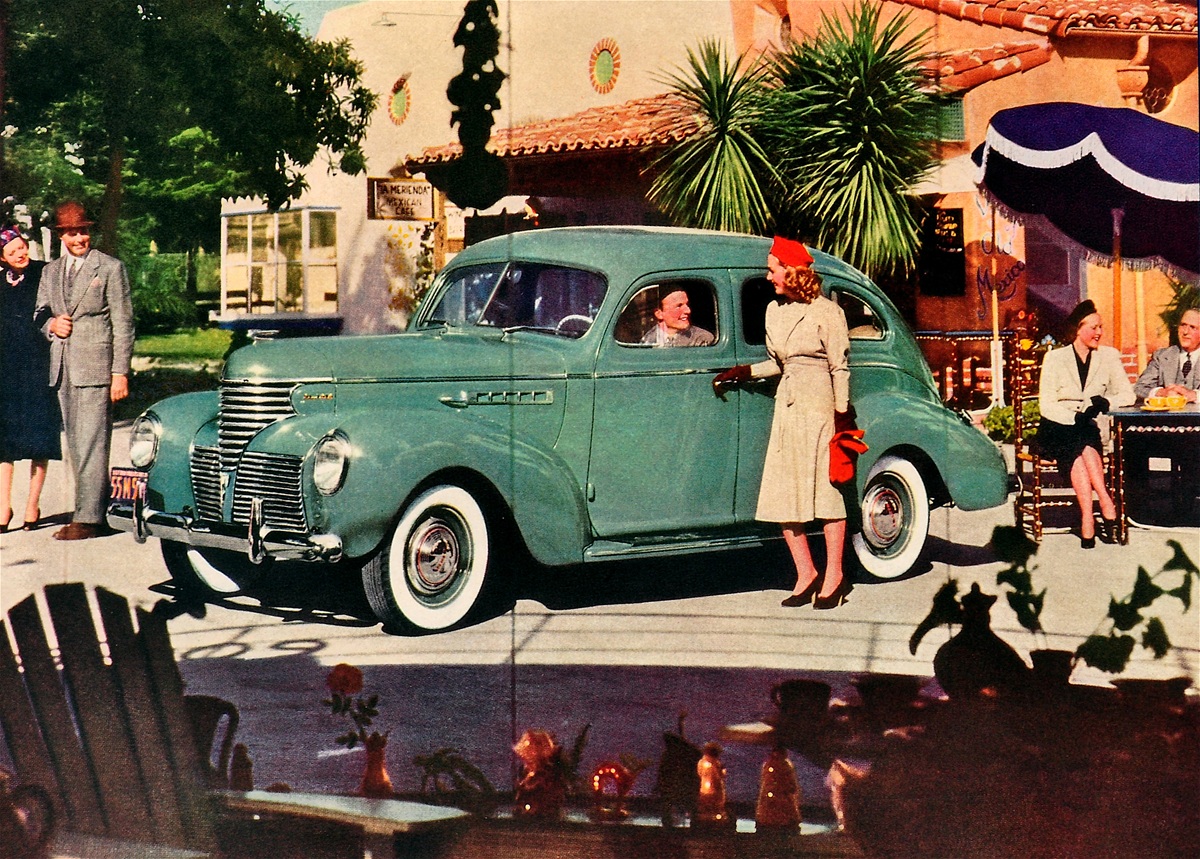
A stylish new front end adorned the new 1939 De Soto and its design included flush-mounted headlights, something that had not been seen around De Soto dealership floors since the demise of the Airflow in 1936. The pictured 4-door Touring Sedan sold for $1,023.00 and there were some 5,993 built during the 1939 model year run.
1941

“Fluid Drive with Simplimatic Transmission” was an option for the 1941 line of De Sotos, and it featured a gearbox that incorporated two forward gears, one for taking off or pulling of heavy loads, with the other for higher-speed acceleration and cruising. The engine and transmission was linked via a Fluid Drive coupling and a conventional clutch and was promoted as offering “no-shift” driving for De Soto buyers. However, a clutch pedal came with the cars and was, in fact, needed for take-offs and when manual shifting.
1942
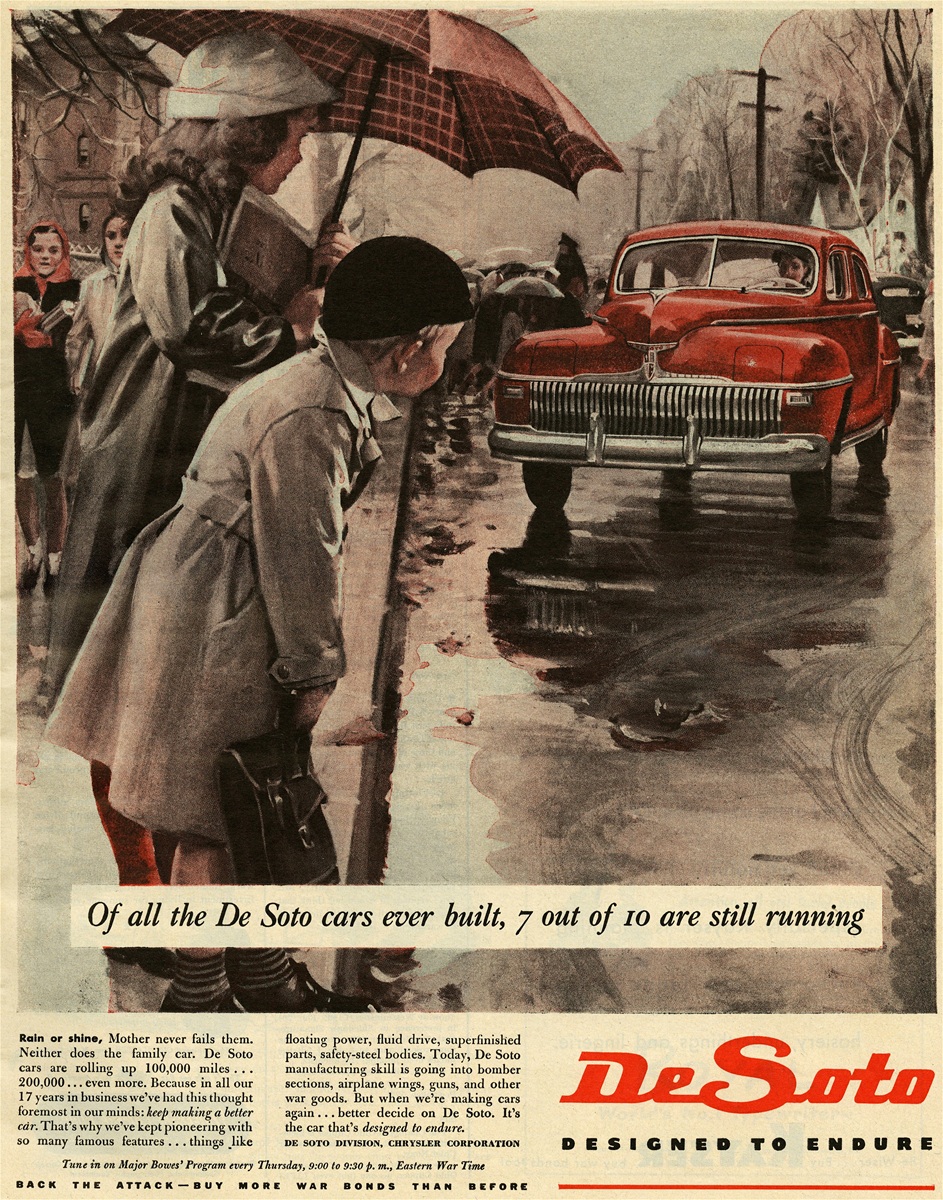
“7 out of 10 are still running” was the theme for this full-page magazine ad promoting the new 1942 De Soto cars, which had innovative retractable headlight covers that had been seen on the 1936-37 Cord 810/812 models but never on an American production car besides the short-lived and expensive Cord. De Soto’s pre-war car production ended on February 9, 1942.
1943
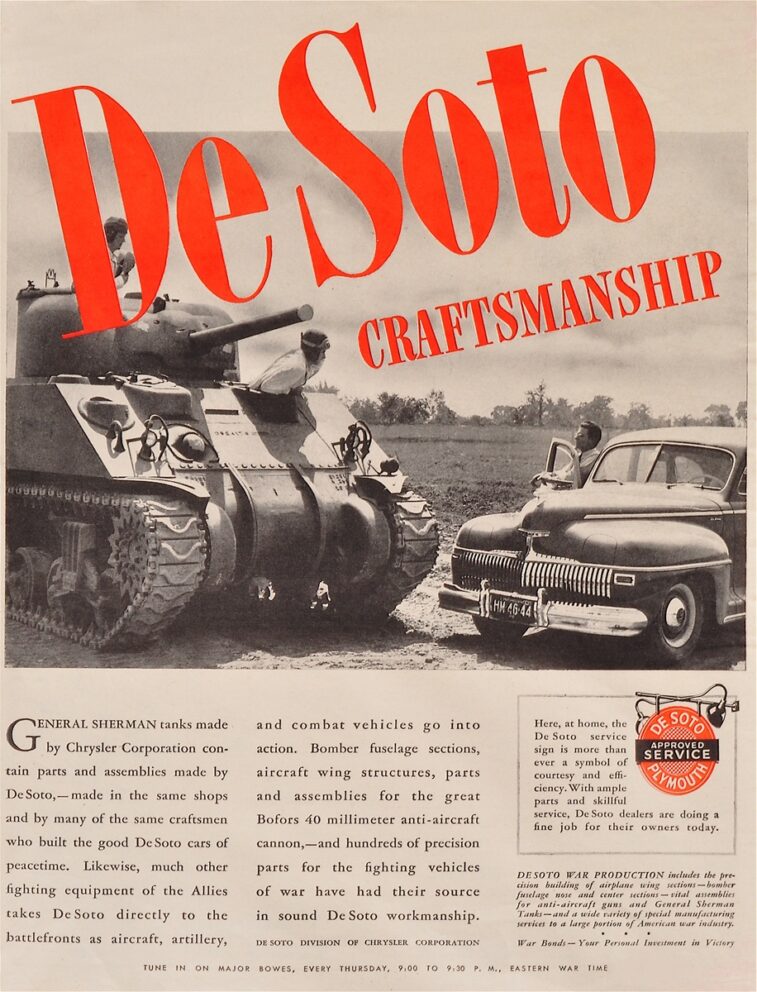
In 1943, this ad was run featuring information on the De Soto war production, showing a 1942 De Soto sedan pulled up to a De Soto-built General Sherman Tank like the ones that were used in the ever-present World War II that was taking place. The opening words of “De Soto Craftsmanship” is reflecting the point that many of the same craftsmen at the De Soto factory that had built the De Soto cars of peacetime are the ones now making tanks and other important fighting equipment for the war. Included in the items listed were aircraft wing structures, bomber fuselage nose and center sections, parts and assemblies for Bofors 40mm anti-aircraft cannons, plus hundreds of precision parts for other combat and fighting vehicles. The pictured 1942 De Soto with its concealed headlights had a modern look to it.
1944
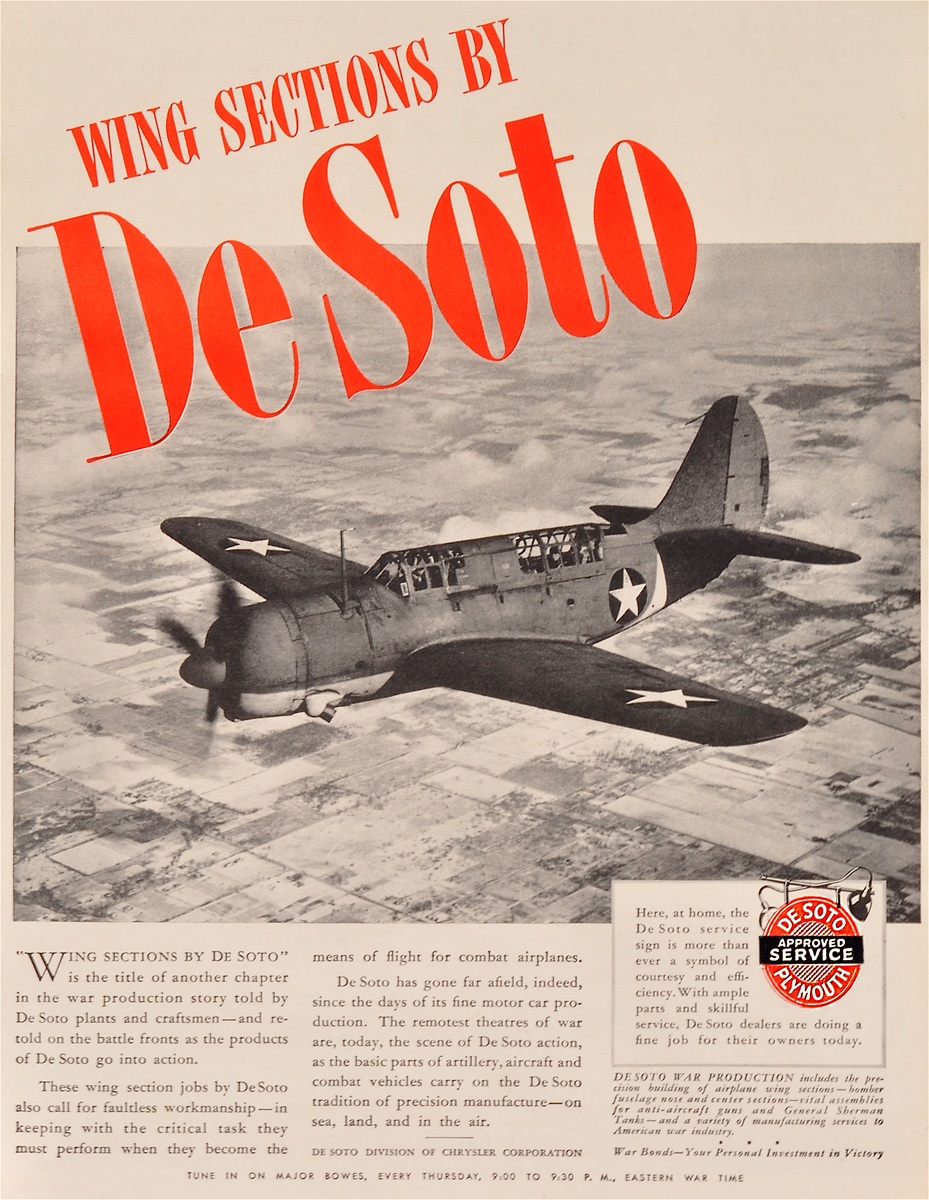
This 1944 De Soto ad reminded readers what the De Soto Division of Chrysler Corporation was doing during this time of war. Here’s part of the message printed under the photo of a US Navy Helldiver bomber plane that used De Soto-built wing sections: “The remotest theatres of war, today, the scene of De Soto action, as the basic parts of artillery, aircraft and combat vehicles carry on the De Soto tradition of precision manufacture – on sea, land, and in the air.”
1949
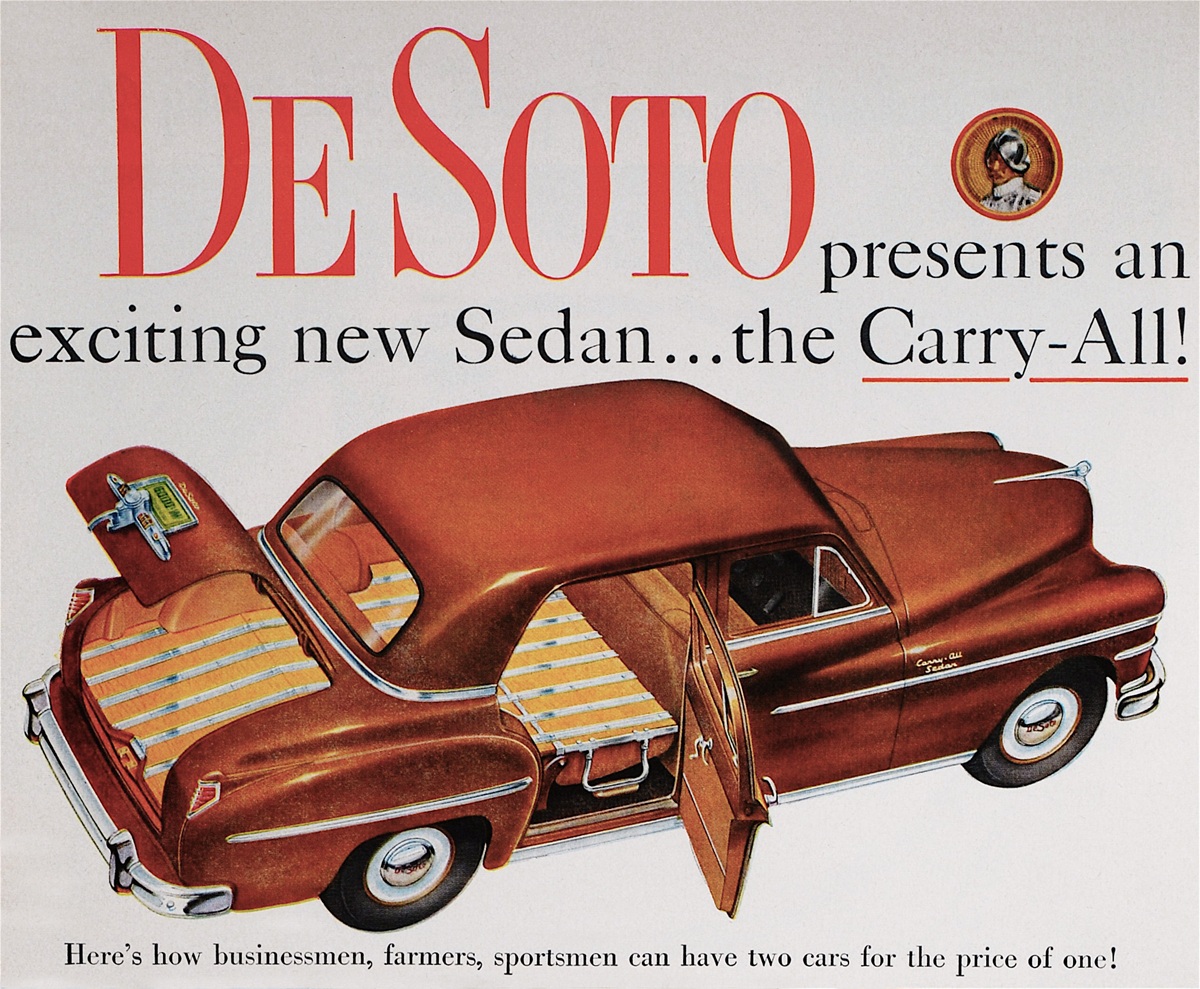
The all-new post-war De Soto came out in early March of 1949, known as second-series models (because the 1946-48 body design was still being produced from December 1, 1948 until about March 1, 1949), featuring an updated shape that was boxier and had a shortened front overhang. As part of the new modernized body design came an available “Carry-All” Sedan that featured a fold-down rear seat that provided for increased utility by having nearly eight feet of flat cargo carrying space.
1952

Big news for 1952 was the availability of the new De Soto V8 “Firedome” models that featured engines of the same name, but labeled FireDome, which were 276.1-cid overhead valve V8s fitted with hemispherical combustion chambers delivering some 160 horsepower. The “HEMI®” engine at this time was not considered a racing powerplant but rather an efficient design that could deliver ample power and not require premium gasoline for operation.
1953
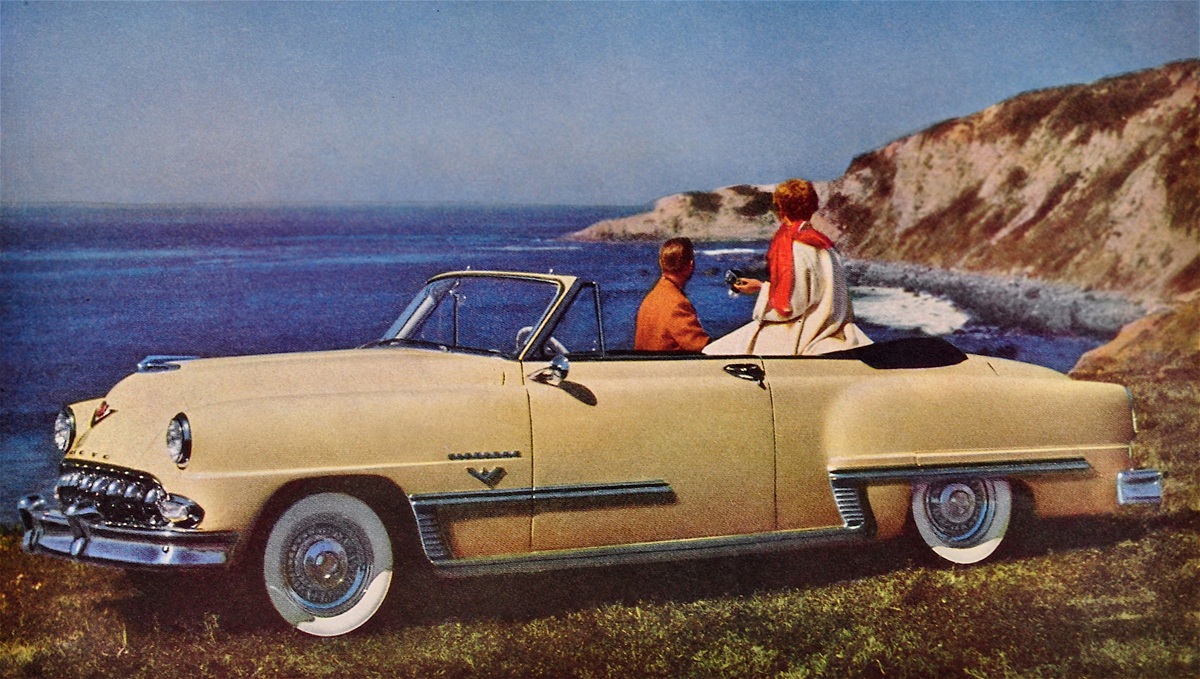
The De Soto body received a reskining job for 1953, along with a few more teeth added to the grille design. This year marked the 25th Anniversary of the brand and shown here is a Firedome convertible featuring optional wire wheels. Base price was $3,172.00 and 1,700 drop top versions were produced during the ’53 model year run.
1954
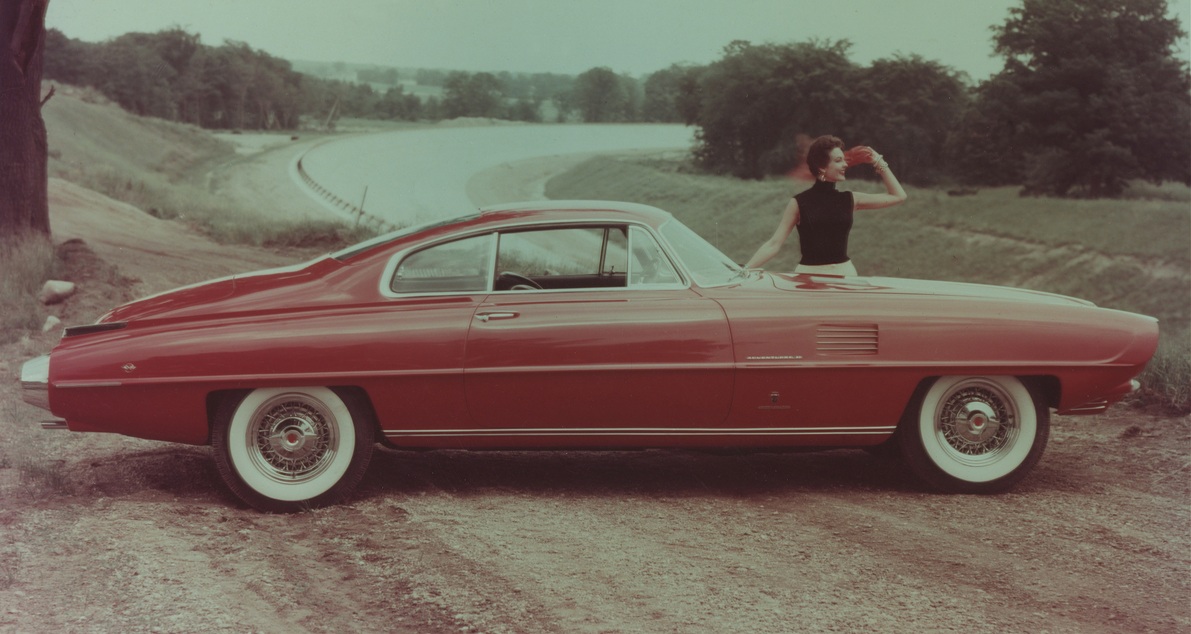
The De Soto Adventurer II was a dream car built by Ghia that toured the European car show circuit during 1954 (and later purchased by King Mohammed V of Morocco). The one-off styling exercise sat just 55-inches tall and rode on a 125.5-inch wheelbase, equipped with a 271-cid Firedome HEMI V8 and Powerflite automatic transmission. One if its innovative features was the backlight glass that opened up, retracting into the deck, allowing draft-free fresh air to the interior.
1955
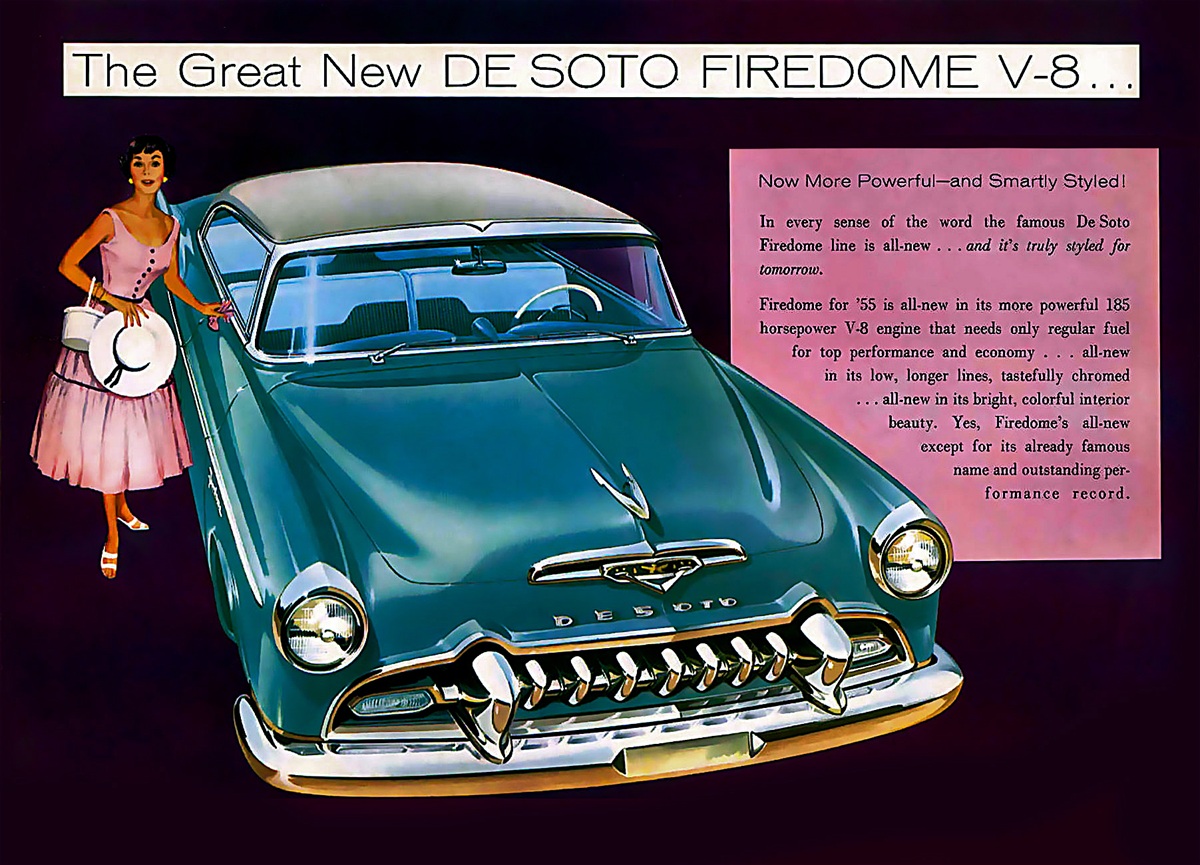
“Now More Powerful – and Smartly Styled!” was the lead-off to advertising materials of the new 1955 line of De Sotos. No longer were six-cylinder engines available and the fresh styling was called the Forward Look, featuring a lower stance, longer and wider body. All De Sotos rode on a 126-inch wheelbase and the toothy signature grille for ’55 now had seven teeth rather than nine as on the model it replaced.
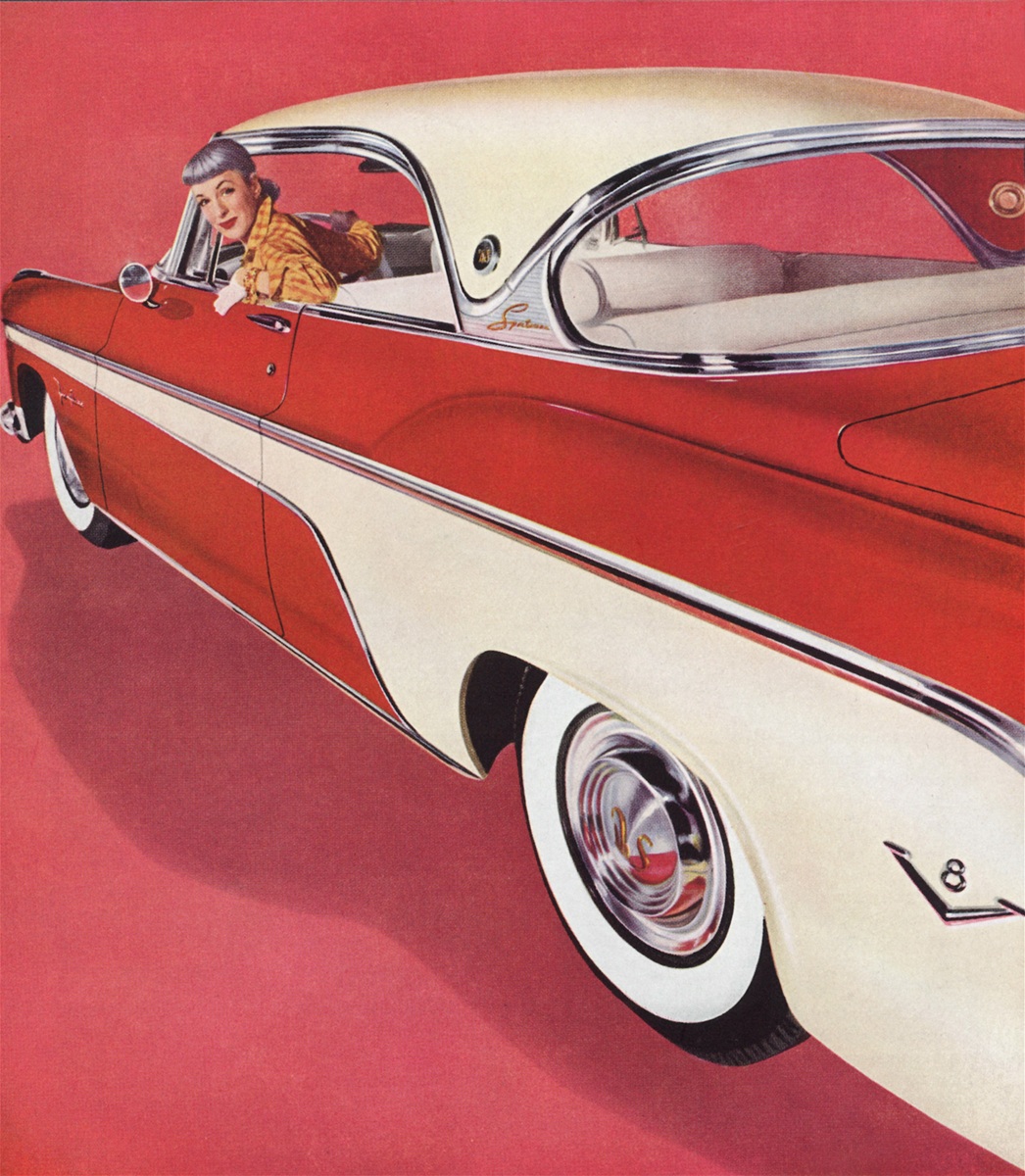
With one of the top women’s clothing fashion designers behind the steering wheel, Anne Fogarty, the 1955 new “Forward Look” De Soto was featured in color advertisements advising readers to “Drive a De Soto before you decide.” The pictured Fireflite Sportsman 2-door hardtop featured as standard equipment a 200-hp De Soto Firedome HEMI engine and cost $2,939.00 before options. As this angle of the photograph exemplifies, the sweepspear side trim was ideal for contrasting two-tone paint treatment.
1956
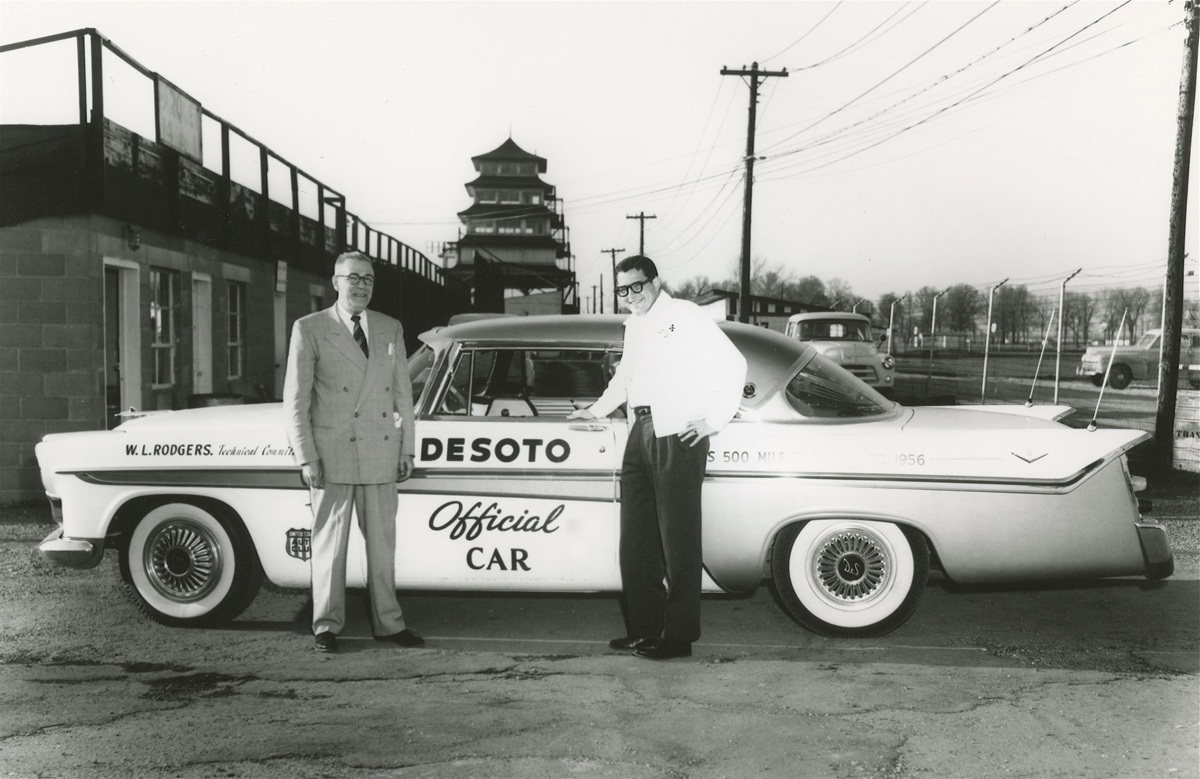
The 1956 De Soto was chosen as the Pace Car for the 40th running of the Indianapolis 500 race and also provided the speedway an Adventurer model, shown here, that had a higher lift cam, enlarged valve ports, larger diameter valves and heavy-duty connecting rods. Power was rated at 320 hp at 5,200 rpm and it used a hydraulic camshaft. The De Soto Pace Car was not an Adventurer model but it featured its exterior appointments.
1957
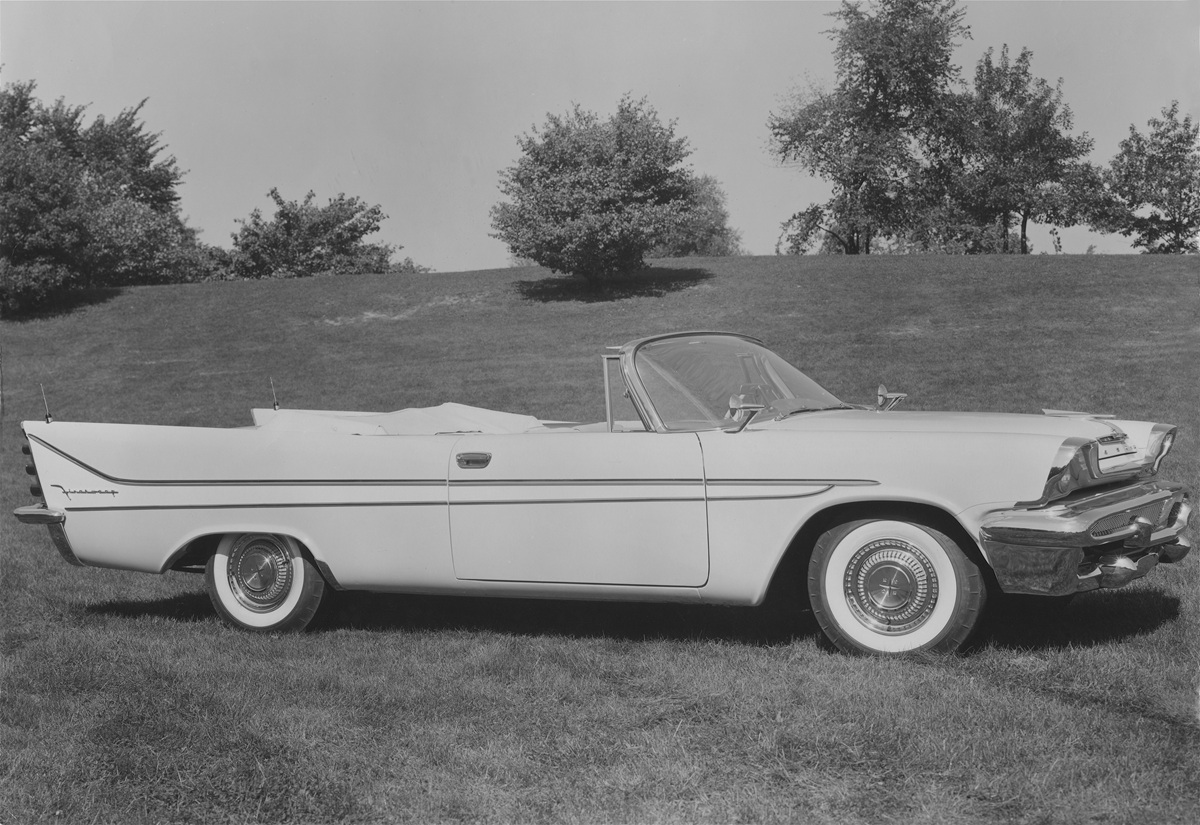
Tail fins accentuated the Exner era wedge body shape as seen here on the 1958 Firesweep convertible, which hit the scales at 3,850 pounds and was priced at $3,219.00. New for De Soto this year was a completely new wedge-headed V8 engine that came in 350- and 361-cid sizes.
1958
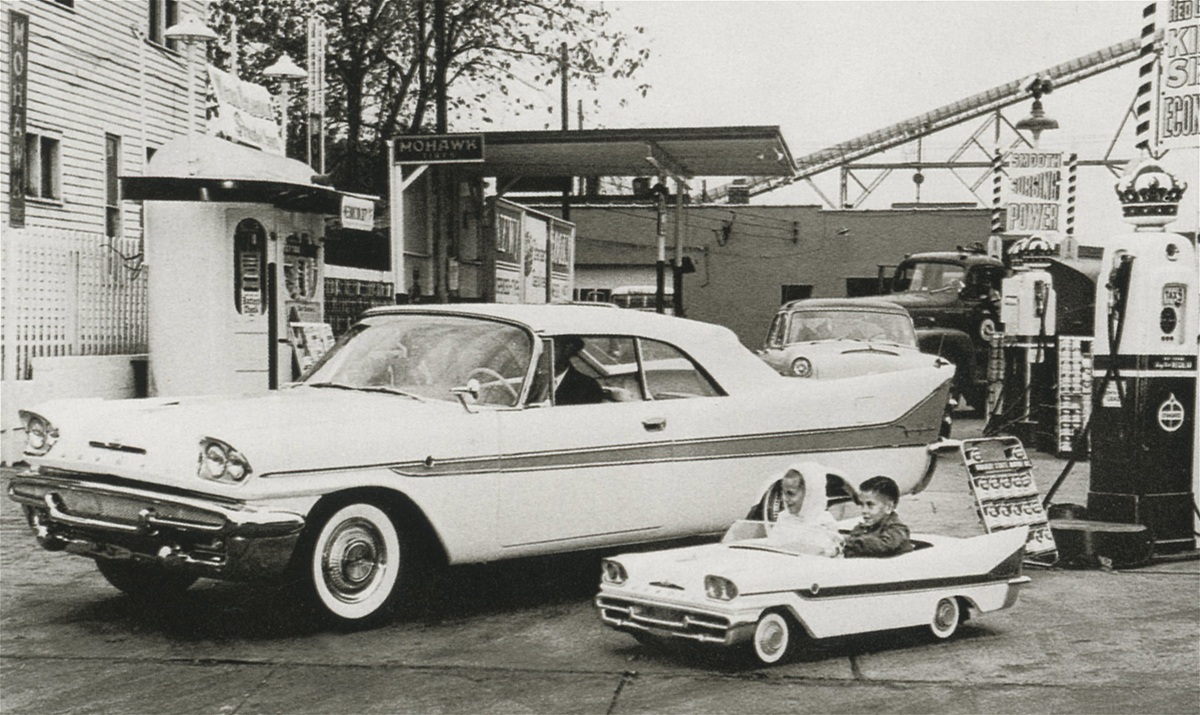
In 1958, the top of the line was the Adventurer convertible, priced at $4,369.00, it was the highest cost car ever in De Soto history (however was some $1,300 less than the 300-D Chrysler, which was also a muscle car type vehicle). Only 82 examples were built. The 3/8th scale miniature De Soto “Firemite” go-cart had a higher production number than the 1:1 real McCoy, as there were 325 of the polystyrene vacuum-formed plastic bodied kiddy cars built to help promote the 1958 full-size versions. These promotional carts were given away by dealers and manufactured by the Robel Corporation out of Berwick, PA, and used authentic De Soto exterior paint and whitewall semi-pneumatic (10-inch diameter) tires with realistic-looking wheel covers. Power came from a 2-hp Briggs & Stratton gas engine and they measured 81 inches in total length. It is believed just three of them exist today.
1959
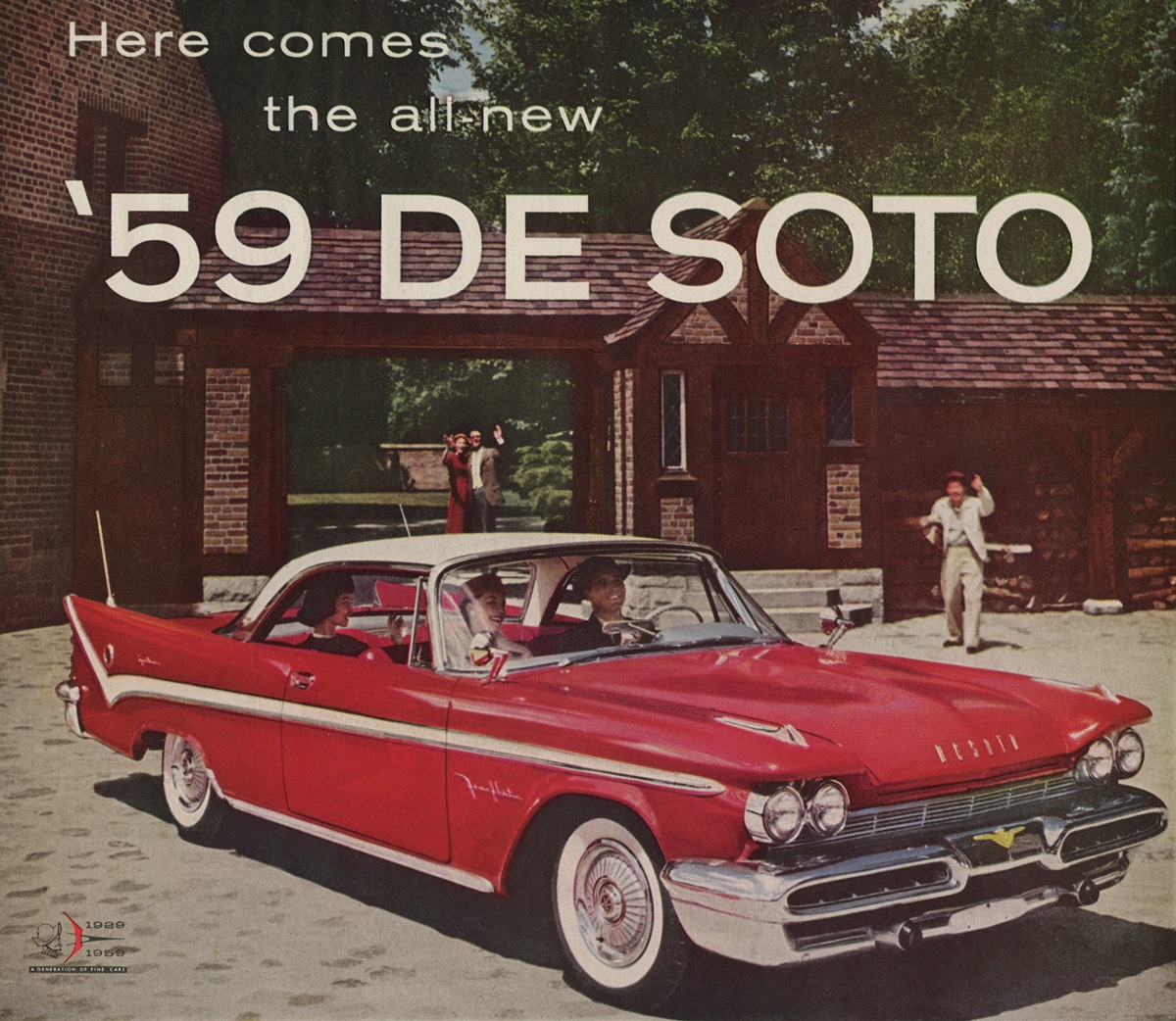
De Soto took on a massive heavy-handed front end appearance for the 1959 model year. To celebrate the 30th anniversary of De Soto, a mid-year addition took place in the spring, special Seville hardtop models featuring blue and white two-tone coloring. Shown here is a more standard red and white Fireflite Sportsman, which came with a 383-cid, 325-hp V8 powerplant. This year also marked the final year for separate body/frame construction for the De Soto line. Production totals of all De Sotos this year came to 45,037.
1960
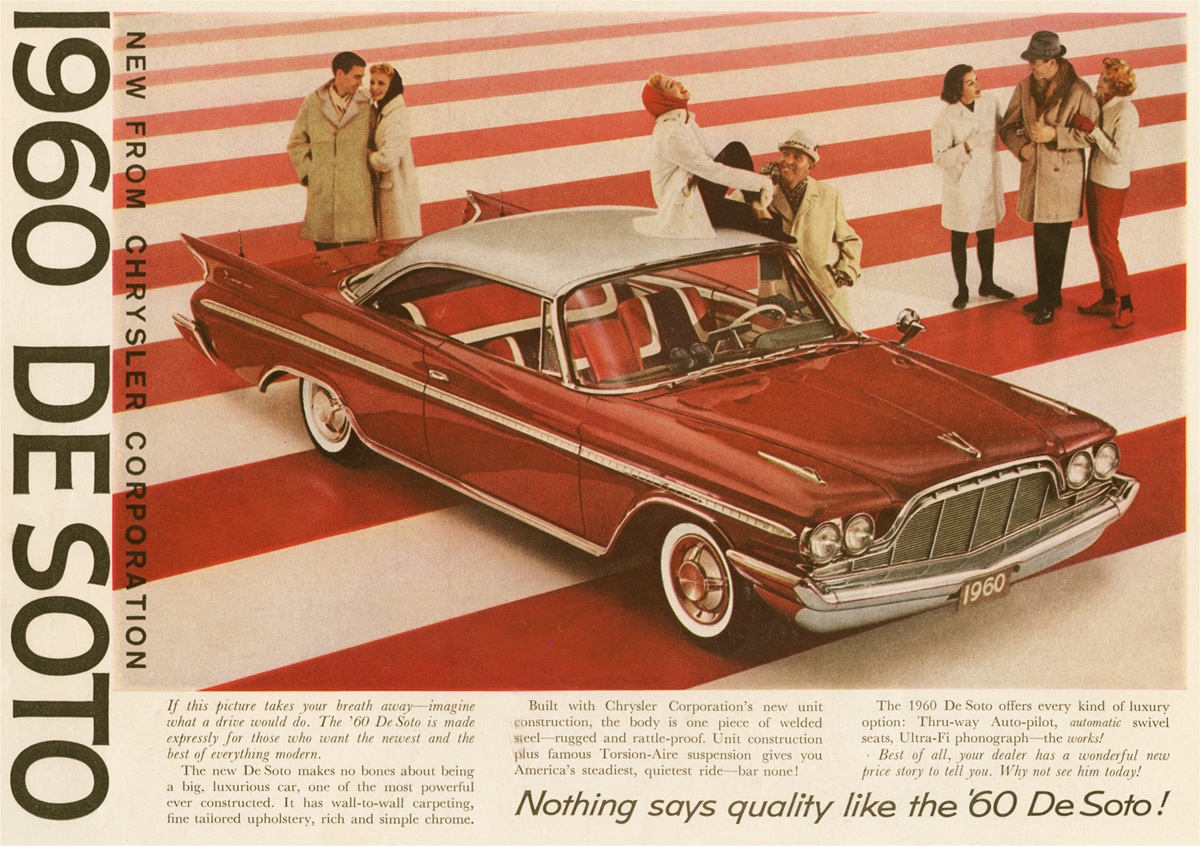
For 1960, the De Soto received the unitized body structure that was used on all Chrysler Corporation cars starting this year, save for the Imperial. Things were changing around De Soto showrooms this year, no more convertibles and the elimination of station wagon models sent an alert that the division was just holding on and in trouble. Sales topped out at 26,081 units.
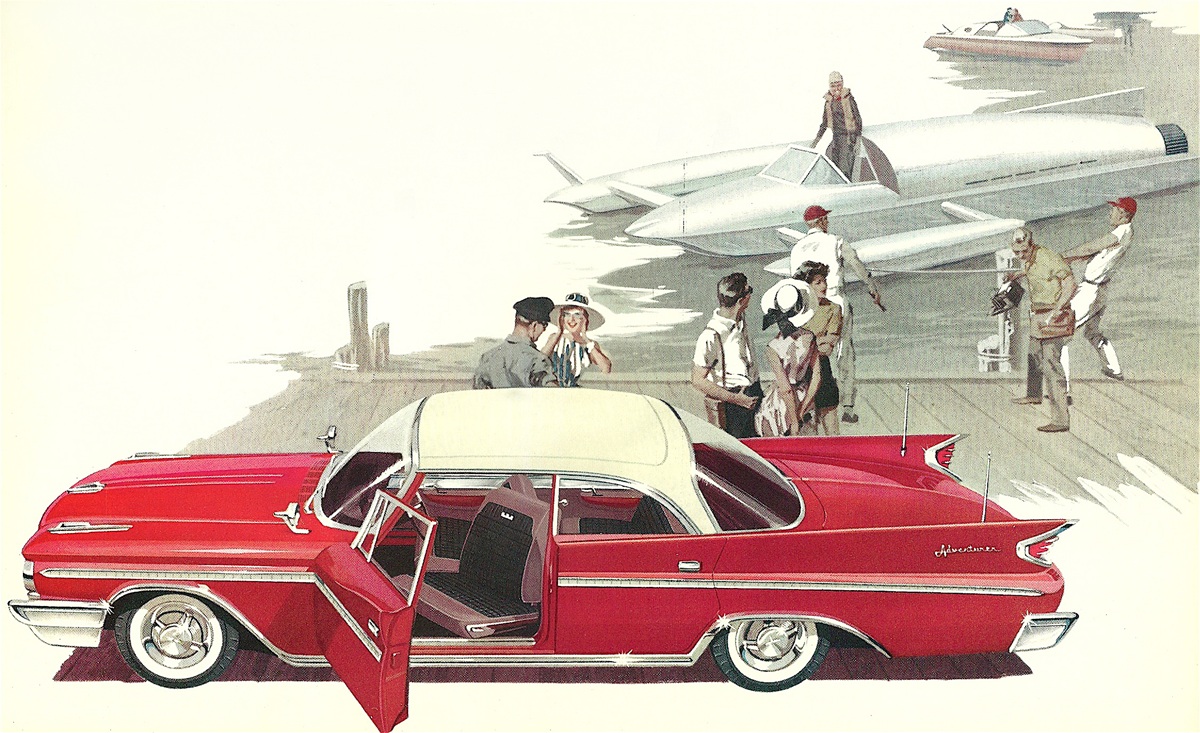
Shown in this artist’s rendering of the 1960 De Soto is a 4-door sedan version of the Adventurer which cost $3,579.00. The Swivel Seat option cost $106.00 (the unique seats are linked to the door via hidden cables, allowing them to swing out when the doors open) and two-tone paint was an option as well, adding $21.00 to the cost of the car, and an available option listed in the dealer booklet was a ram-induction dual four-barrel 383-cid engine that added $283.00 to the price of the car.
1961
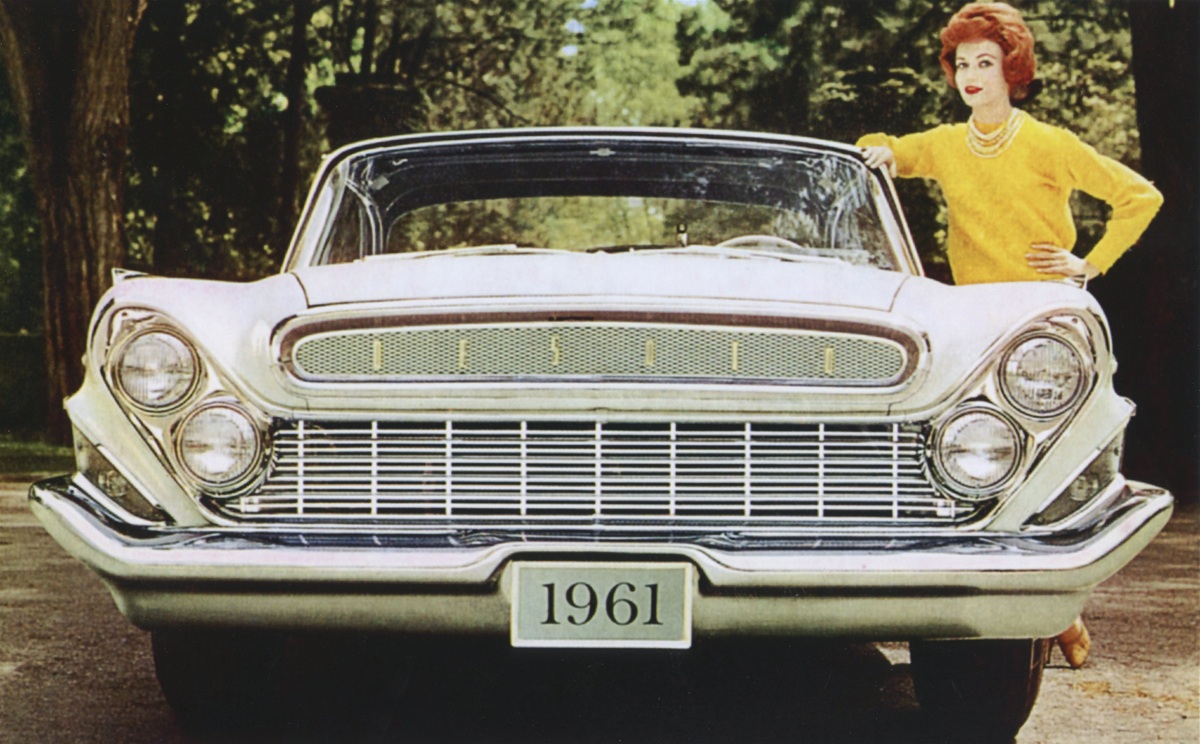
Some say the 1961 De Soto has the dubious honor of having one of the least-desireable front ends in the history of American automobile production, while Mopar® purists say the 1961 De Soto was the last of a mighty marque filled with rich history! No matter which side of the fence one is on regarding the styling, the canted headlights and two-section grille layout is certainly a distinguishing feature for these extremely rare De Sotos in their final offering (a total of just 3,034 were built).
Author: James Maxwell
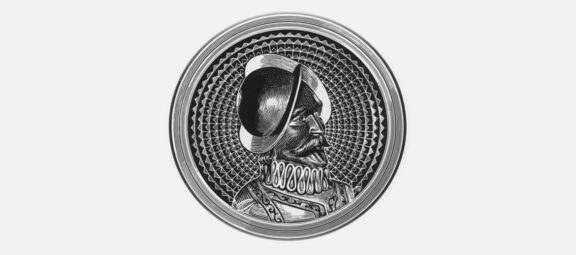
0 Comments